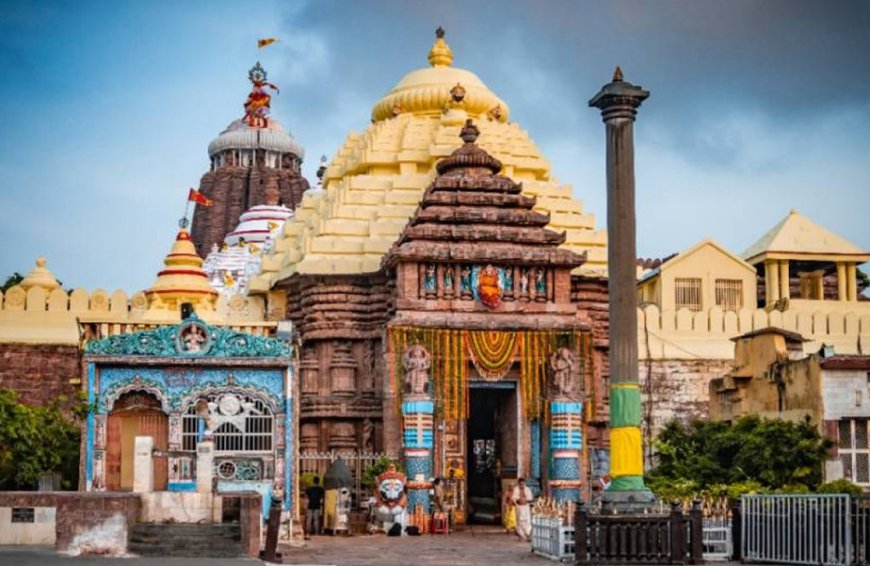Exploring the Fascinating History of Puri and Jagannath Temple
Jagannath Puri History, a revered spiritual hub in Odisha, is renowned for its rich history and the iconic Jagannath Temple. Steeped in legends and architectural brilliance, it continues to inspire devotees and travellers worldwide with its timeless charm.

Puri, located in the eastern Indian state of Odisha, is a city steeped in spirituality, heritage, and timeless traditions. Known as one of the holiest cities in India, Puri’s fame rests largely on the revered Jagannath Temple, a major pilgrimage site for Hindus. This article delves deep into Puri history and the intriguing Jagannath Puri history, exploring the cultural, architectural, and spiritual significance of this ancient city.
Puri’s Historical Background
Puri’s history dates back to antiquity, earning mentions in ancient Indian texts like the Mahabharata, the Brahma Purana, and other sacred scriptures. The city referred to as "Sri Purushottama Kshetra" in ancient times, has been a key part of India's spiritual landscape for centuries.
Cultural Importance
Puri’s role as a spiritual hub began long before the Jagannath Temple was constructed. The region has been linked to Buddhism, Jainism, and Vaishnavism, with archaeological evidence suggesting the existence of Buddhist stupas and monasteries in and around Puri. Over time, the city evolved into a centre for the worship of Lord Jagannath, attracting devotees from across India.
The Origins of Jagannath Puri
The Jagannath Puri history is inextricably tied to the iconic Jagannath Temple, a masterpiece of Kalinga architecture and one of the Char Dhams (four sacred pilgrimage sites) in Hinduism. The temple’s origins are shrouded in legend and mythology, adding to its mystique.
Mythological Beginnings
According to mythology, Lord Jagannath, an incarnation of Lord Vishnu, chose Puri as his eternal abode. Legend states that King Indradyumna, a devout ruler of the Malwa kingdom, received divine instructions to establish a temple for Lord Jagannath. Guided by celestial interventions, the king constructed the first temple, believed to be on the same site where the present structure stands.
Historical Construction
The current structure of the Jagannath Temple dates back to the 12th century. It was built by King Anantavarman Chodaganga Deva of the Eastern Ganga Dynasty. The temple’s construction marked a significant milestone in the history of Odisha, showcasing the architectural brilliance of the Kalinga style. The 214-foot-high temple tower, adorned with intricate carvings, stands as a testament to the craftsmanship of the era.
The Jagannath Temple: A Symbol of Devotion
The temple is dedicated to Lord Jagannath, his brother Balabhadra, and his sister Subhadra, whose wooden idols are placed in the sanctum. The idols are unique, as they are replaced every 12-19 years in a sacred ritual called Nabakalebara, signifying rebirth.
Architectural Marvel
The Jagannath Temple is a quintessential example of the Kalinga style of architecture. Its towering Vimana (main sanctum), the intricately carved Jagamohana (prayer hall), and the grand Natya Mandapa (dance pavilion) reflect the temple’s artistic and spiritual significance.
The Rath Yatra
The annual Rath Yatra, or Chariot Festival, is the most iconic event associated with the Jagannath Temple. During this grand spectacle, the deities are placed on elaborately decorated chariots and taken to the Gundicha Temple. This tradition, symbolizing the journey of the gods to their maternal aunt’s house, attracts millions of devotees worldwide.
The Role of Puri in Indian History
Puri has been a key player in shaping the socio-political and cultural fabric of India. Throughout history, it has served as a hub for religious reform, art, and architecture.
Medieval Period
During the medieval period, Puri was under the rule of various dynasties, including the Eastern Gangas, the Gajapatis, and the Mughals. Each ruler contributed to the city’s development, particularly the Jagannath Temple, by adding new structures, fortifications, and endowments.
Colonial Era
In the colonial period, Puri emerged as a prominent centre for Hindu pilgrims. The British administration acknowledged the temple’s importance and took measures to preserve its sanctity, though the colonial influence also brought challenges in maintaining temple autonomy.
The Spiritual Essence of Puri
Puri is often called the "Spiritual Capital of Odisha." Its significance goes beyond religion, encompassing the philosophy of universal love and inclusivity. The Jagannath Temple, with its tradition of offering Mahaprasad (sacred food) to all without discrimination, embodies these values.
Jagannath Cult and Syncretism
The Jagannath cult is a blend of tribal, Buddhist, and Hindu traditions. The deities’ wooden forms are believed to have tribal origins, while the rituals echo Buddhist practices. Over time, these influences merged to create a unique religious tradition centred around Lord Jagannath.
Puri as a Cultural Hub
Puri’s history is not limited to its religious aspect. The city has been a cradle of classical Odissi music and dance, which are integral to temple rituals. Festivals, folk arts, and traditional crafts thrive in Puri, preserving its rich heritage.
Challenges in Preserving Puri’s Heritage
Despite its glorious history, Puri faces challenges in preserving its cultural and architectural heritage. Urbanization, environmental degradation, and the pressures of mass tourism have raised concerns about maintaining the city’s sanctity and sustainability. Efforts by the government, temple authorities, and conservationists are ongoing to address these issues.
Conclusion
The Puri history and Jagannath Puri history are a captivating tapestry of myths, legends, and historical milestones. From its ancient roots as a spiritual hub to its enduring legacy as a beacon of faith and culture, Puri continues to inspire and enchant visitors from around the world.
For those seeking spiritual solace, architectural marvels, or a deep dive into India’s cultural heritage, Puri offers an unparalleled experience. Its timeless charm and sacred aura ensure that it remains a cherished destination for generations to come.

 vikram746
vikram746